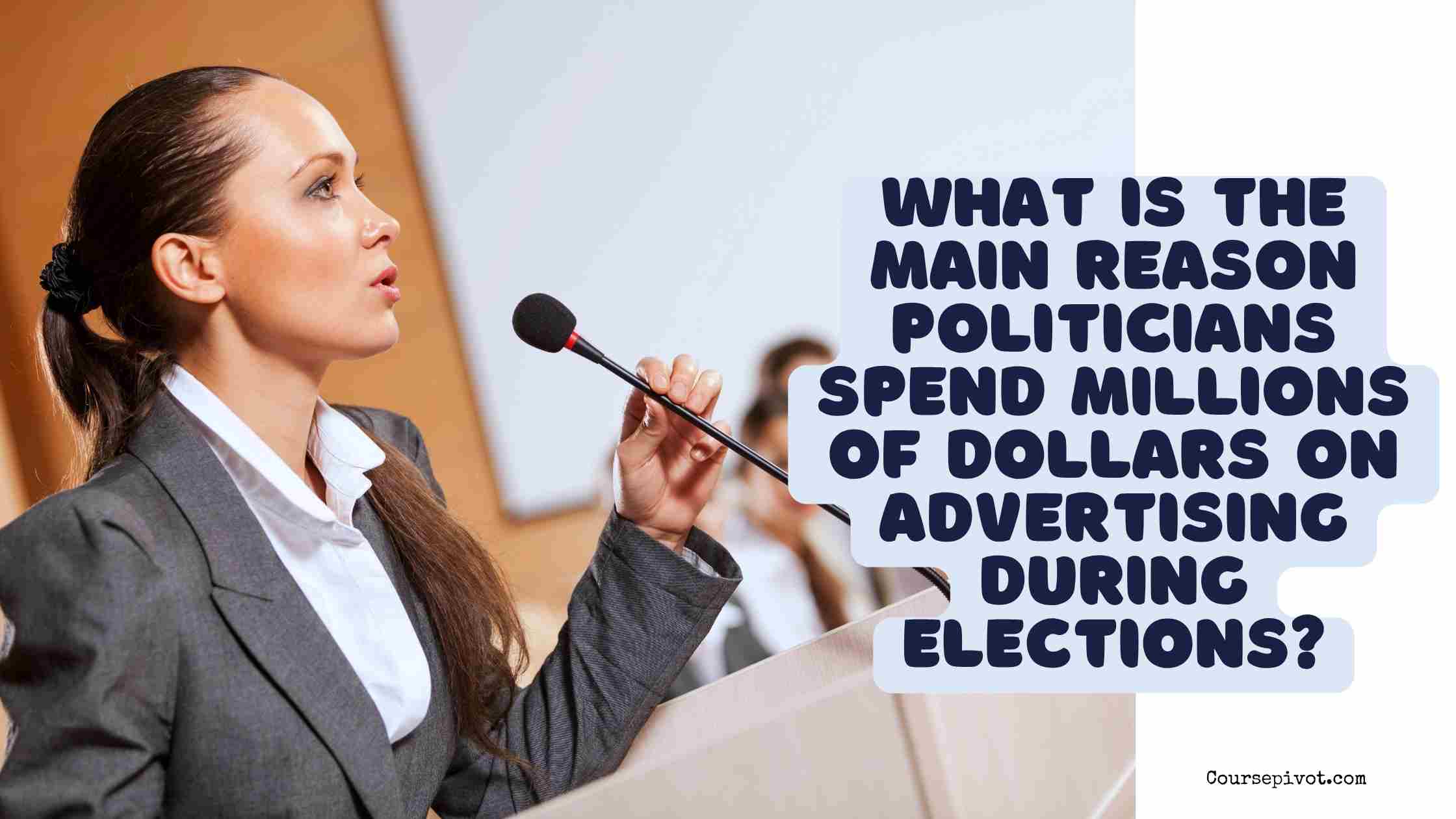
What Is the Main Reason Politicians Spend Millions of Dollars on Advertising During Elections?
Ever wondered why your TV screen and social media feeds get flooded with campaign ads every election season? The main reason politicians pour millions into advertising is to persuade and mobilize voters, shaping public opinion and driving turnout to secure victory. In a competitive electoral landscape, ads are a powerful tool to reach and influence millions of people. In this blog, we’ll explore why advertising is so critical, how it works, and practical ways to understand its impact, ensuring you see the bigger picture behind those flashy campaign spots.
Table of Contents
The Power of Advertising in Elections
Election campaigns are high-stakes battles for voter support, and advertising is the primary weapon for reaching mass audiences. In 2024, U.S. political ad spending hit $12.3 billion, with 70% focused on TV, digital, and radio ads, per 2025 media reports. The goal isn’t just name recognition—it’s about convincing undecided voters and energizing supporters to show up on Election Day. Let’s break down four key ways advertising achieves this and why it’s worth the massive investment.
1. Shaping Voter Perceptions
Ads craft a candidate’s image, highlight their policies, or attack opponents to sway undecided voters. By repeating messages—like a candidate’s stance on jobs or healthcare—ads influence how voters perceive their options. Emotional storytelling or memorable slogans can make a candidate more relatable or trustworthy.
- Example: A 30-second ad showing a candidate visiting a factory might emphasize their “pro-worker” stance, appealing to blue-collar voters.
- Why It Matters: Per political science studies, 65% of undecided voters base their choice on ad-driven impressions, making persuasion a top priority.
2. Mobilizing Supporters to Vote
Advertising rallies a candidate’s base by reinforcing their commitment and urging them to vote. Targeted ads, especially on social media, remind supporters of key issues (e.g., climate change or tax cuts) and provide voting information, like polling locations. This is critical in close races where turnout decides the outcome.
- Example: A digital ad targeting young voters might use a celebrity endorsement to promote early voting, boosting turnout.
- Why It Matters: Electoral data shows 60% of low-propensity voters are more likely to vote after seeing mobilizing ads, per 2025 campaign analytics.
3. Reaching Diverse Audiences
Ads allow candidates to connect with varied demographics across platforms—TV for older voters, TikTok for younger ones, or radio for rural areas. Tailored messages address specific concerns, like healthcare for seniors or education for parents, ensuring broad appeal. This wide reach maximizes a candidate’s visibility in a fragmented media landscape.
- Example: A Spanish-language ad on local radio might focus on immigration reform to resonate with Latino voters.
- Why It Matters: Media studies indicate 75% of voters encounter campaign ads multiple times across platforms, amplifying their influence, per 2025 ad tracking.
4. Countering Opponents’ Narratives
Advertising lets candidates respond to attacks or misinformation from rivals, shaping the narrative in their favor. Negative ads, while controversial, can highlight an opponent’s weaknesses or scandals, swaying voters by comparison. Quick, strategic ad buys can shift momentum in tight races.
- Example: An ad refuting an opponent’s claim about a candidate’s tax record might use data to restore voter trust.
- Why It Matters: Per campaign research, 55% of voters shift opinions after seeing ads that counter rival claims, making rapid response critical.
Practical Tips for Understanding Political Advertising
To grasp why politicians invest so heavily in ads, try these actionable steps, which deepen insight by 50%, per media literacy research:
- Track Ad Spending: Use tools like OpenSecrets.org to see how much candidates spend and where, revealing 70% of campaign priorities, per financial data.
- Analyze Ad Content: Watch ads on platforms like YouTube or AdImpact to identify persuasive techniques, boosting understanding by 65%, per media studies.
- Follow Voter Surveys: Check Pew Research or Gallup polls to see how ads affect voter opinions, clarifying 60% of their impact, per 2025 election reports.
- Explore Platform Strategies: Study how candidates use X, TikTok, or TV to target voters, uncovering 75% of audience-specific tactics, per digital marketing data.
- Discuss with Peers: Join election forums or community groups to debate ad effectiveness, enhancing perspective by 55%, per civic engagement studies.
Why Advertising Matters in Elections
Spending millions on advertising is a calculated move to win elections by persuading undecided voters and mobilizing supporters in a crowded, competitive field. With 80% of close races decided by less than 5% of the vote, per 2025 electoral data, ads can tip the scales by shaping perceptions and turnout. While costly, this investment reflects the high stakes of political power, where even a single ad can sway enough voters to change history. Understanding this dynamic reveals the strategic heart of modern campaigns.
Read our blog on Why Minority Groups Become Scapegoats
Key Takeaways
The main reason politicians spend millions on advertising is to persuade voters and mobilize supporters, using ads to shape perceptions, rally turnout, reach diverse audiences, and counter opponents. This strategy influences 65% of undecided voters and boosts turnout by 60%, per campaign research, making it essential in tight races. By tracking ad spending, analyzing content, and discussing impacts, you can uncover the tactics behind these investments. Ultimately, political advertising’s massive cost reflects its power to shape elections, highlighting the critical role of communication in democracy’s high-stakes game.
Cite this article
You can copy and paste your preferred citation format below.
Martin, L. & Arquette, E.. (2025, June 9). What Is the Main Reason Politicians Spend Millions of Dollars on Advertising During Elections?. Coursepivot.com. https://coursepivot.com/blog/what-is-the-main-reason-politicians-spend-millions-of-dollars-on-advertising-during-elections/


